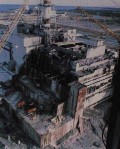 Petryna’s account allowed me to grab hold of some of the thoughts/concerns that had been unintelligible points of confusion. Mainly, it is through Life Exposed that I feel that I am learning to ‘see’ anthropologically or least what ‘seeing’ what I might need to do to be able to see the world in such a way that allows the ethnographer to situate her work in the space of “changing dynamic between the known and the unknown” (Petryna, 26). Petryna’s work shows us how subjects become visible in the different interim interstitial spaces between the invisible and the visible, the unknown and the known. And, she also positions her subjects in terms of potentialities, many of them being “prospective disabled” people (29). None of the subjects that populate her rich narrative are ever frozen in one particular subject position and, moreover, Petryna is aware of the importance that multiplicity plays in understanding subjectivity as she charts the tensions caused by multiple indenties/subjecitivities. For example, consider Anton in the penultimate chapter: he struggles between father, worker, sufferer, husband, alcoholic, abuser, victim… Petryna is able to present Anton to us in a way that does not simply portary him as a complicated subject but as constantly slipping into roles that are forced onto him through external social constraints and through internal struggling; this not simply understanding the subject as a complicated assemblage but a multi-scalar complicated assemblage. What I mean by this is that Anton (and every other ‘character’ in this story) exists and is made legible in terms of multiple different scales: the state, the hospital, the home, etc. And, moreover, there are other ‘actors’ in this text beyond the people who populate it, one of the major stakeholders is science itself, which has a huge stake in what happens in the “living laboratory” of Chernobyl (52). This is certainly a thick text.
Petryna’s account allowed me to grab hold of some of the thoughts/concerns that had been unintelligible points of confusion. Mainly, it is through Life Exposed that I feel that I am learning to ‘see’ anthropologically or least what ‘seeing’ what I might need to do to be able to see the world in such a way that allows the ethnographer to situate her work in the space of “changing dynamic between the known and the unknown” (Petryna, 26). Petryna’s work shows us how subjects become visible in the different interim interstitial spaces between the invisible and the visible, the unknown and the known. And, she also positions her subjects in terms of potentialities, many of them being “prospective disabled” people (29). None of the subjects that populate her rich narrative are ever frozen in one particular subject position and, moreover, Petryna is aware of the importance that multiplicity plays in understanding subjectivity as she charts the tensions caused by multiple indenties/subjecitivities. For example, consider Anton in the penultimate chapter: he struggles between father, worker, sufferer, husband, alcoholic, abuser, victim… Petryna is able to present Anton to us in a way that does not simply portary him as a complicated subject but as constantly slipping into roles that are forced onto him through external social constraints and through internal struggling; this not simply understanding the subject as a complicated assemblage but a multi-scalar complicated assemblage. What I mean by this is that Anton (and every other ‘character’ in this story) exists and is made legible in terms of multiple different scales: the state, the hospital, the home, etc. And, moreover, there are other ‘actors’ in this text beyond the people who populate it, one of the major stakeholders is science itself, which has a huge stake in what happens in the “living laboratory” of Chernobyl (52). This is certainly a thick text.
I used the word ‘actor’ in the previous paragraph because I wanted to allude to the question of agency; primarily, who has it and how is it exerted? Finally, how does the anthropologist write agency. In Petryna’s text I saw another form of agency emerge, an agency of slippage. Many of the subjects/characters/etc. in the book slip between multiple agencies; between, for example, active seekers of sufferer status and docile bodies being written on by the state. Moreover, Petryna charts how these kinds of slips are in themselves different kinds of agencies, many of the subjects of her story actively slip between ‘roles’ and forms of agency. The state, for example, slips from benefactor to oppressor, from passive victimhood to active subjection. And, Petryna herself struggles with these slippages as she moves from participant, witness and advocate. Such agential slippage is also a kind ethical slippage, like the dosages, the threshold of what is acceptable is constantly moving. The ethnographer must never fix/crystallize that threshold space.
I guess a final and perhaps obvious point is, nonetheless, one that I have consistently struggled with: how to understand one’s object theoretically (and historically) without losing sight (and site) of that object. And, this is what I appreciated most with Petryna’s work. Her work makes theoretical concepts visible only in how they exist in the world. The concepts themselves have no agency outside of her field. For example, the concept of ‘biological citizenship’ while easily transported out of her field and, in fact, has been taken up fairly widely. For Petryna, it only is legible in relation to Chernobyl and, conversely, the kinds of concepts she takes from other thinkers are ‘activated’ in her field and only in her field. I feel like this is what Emily Martin meant when she criticized Latour of not including culture in his examination of science and society and also how such a slip leads us to dead metaphors. While I understood her argument (theoretically), it is Petryna’s work that I able am to see this process of metaphorical (re)animation in action. What I have always struggled with is how to approach an object theoretically, and of course, the concomitant other problem: how to attend to an object that is not theoretical but in and of the world?

